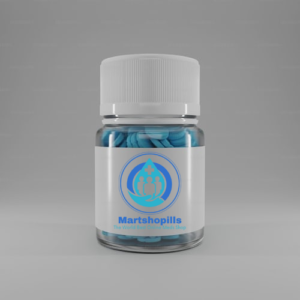Description
Crystal Meth
Crystal meth is a powerful and addictive stimulant that has gained notoriety in recent years. It is also known as methamphetamine, meth, or crystal. This document aims to provide an overview of the history, effects, and risks associated with the use of that.
History
Crystal meth first emerged in the late 1920s as a medication for nasal decongestants. However, its addictive potential and stimulant effects soon became apparent, leading to its misuse as a recreational drug. Over time, its production and distribution became more sophisticated, and it is now widely available both on the streets and through online platforms.
Effects
Crystal meth produces a wide range of effects, both physiological and psychological. Some of the immediate effects include increased energy, alertness, and euphoria. Users may also experience increased heart rate, blood pressure, and body temperature. However, the long-term effects can be devastating, including addiction, psychosis, and cognitive impairment.
Risks
The risks associated with the use of that are numerous and severe. Prolonged use can lead to addiction, which is characterized by compulsive drug-seeking behavior and an inability to control one’s use. Additionally, the use can contribute to mental health problems such as psychosis, depression, and anxiety. The excessive use of that can also damage vital organs, such as the heart, liver, and kidneys.
Treatment and Support
Treatment options for it addiction vary by individual and severity of the addiction. Common approaches include detoxification, counseling, and medication-assisted treatment. Support groups such as Alcoholics Anonymous and Narcotics Anonymous can also be helpful for those struggling with addiction.
Conclusion
Crystal meth is a highly addictive and dangerous drug that can have devastating effects on individuals and communities. Understanding the history, effects, and risks associated with that is crucial in supporting individuals struggling with addiction and providing appropriate interventions. It is crucial to address that use and promote prevention efforts to reduce its prevalence and protect public health.




Blaise (verified owner) –
Your product is good and of excellent quality and the delivery was also done promptly. I demand people to use it. It has excellent results.
Adelbert (verified owner) –
Thank you for answering my questions correctly and delivering my order to me.
Abigale (verified owner) –
Good response from the support.
Marietta (verified owner) –
Your product is excellent and has good results.
Edgardo (verified owner) –
I think this is amazing. Lots of features and customizable from every point of view. The few times I asked for help in support they were competent, fast and above all very patient. Really recommend
Kirstin (verified owner) –
The first time I got the urges to leave a comment, but this is simply a top-notch thing you can find.
Abdiel (verified owner) –
Think everyone should know about this, it’s just beyond my expectations
Fletcher (verified owner) –
Your product is good and of excellent quality and the delivery was also done promptly. I demand people to use it. It has excellent results.
Roxanne (verified owner) –
I got excellent support for this item. They were patient with me, and helped me solve my issue. I recommend this company 100%
Adele (verified owner) –
Think everyone should know about this, it’s just beyond my expectations
Gia (verified owner) –
I got excellent support for this item. They were patient with me, and helped me solve my issue. I recommend this company 100%
Ariel (verified owner) –
Good response from the support.
Pierre (verified owner) –
Quite easy to use, nice design, surely will buy again
Rosalind (verified owner) –
You really fulfilled your guarantee. You said the order would arrive within five days, and I really did receive my order.
Joana (verified owner) –
Your UK to UK shipping service is very high.
Betsy (verified owner) –
Good response from the support.
Willard (verified owner) –
Your overnight shipping is very high.
Napoleon (verified owner) –
Been using it for a while, I usually don’t write a review but this time I am truly convinced to write.
Liliane (verified owner) –
I think this is amazing. Lots of features and customizable from every point of view. The few times I asked for help in support they were competent, fast and above all very patient. Really recommend
Adelia (verified owner) –
Just love the design and the customer support is the nicest.
Dejah (verified owner) –
This is the best support for a product I had so far, they reply quickly and solve themselves the problems most of the time. Kudos guyz
Sherwood (verified owner) –
The item and the design are very cool. Also the support is amazing, they always help you with any detail that you have.
Rosanna (verified owner) –
I’m caught 🙂 Find my love and will never buy in any other shop.
Domenica (verified owner) –
This is the coolest thing I’ve found on here! Will keep using your products in the future!
Izabella (verified owner) –
You really fulfilled your guarantee. You said the order would arrive within five days, and I really did receive my order.
Agnes (verified owner) –
Good response from the support.
Selena (verified owner) –
Your UK to UK shipping service is very high.
Don (verified owner) –
The item and the design are very cool. Also the support is amazing, they always help you with any detail that you have.
Terrell (verified owner) –
Wished I had found this sooner, it took me a lot of money and time until I found my dream product here!
Odie (verified owner) –
Quite easy to use, nice design, surely will buy again
Fidel (verified owner) –
I will also tell my friends to refer you.
Tommie (verified owner) –
Good response from the support.
Easter (verified owner) –
Your UK to UK shipping service is very high.
Kellie (verified owner) –
Been using a lot of items, this one is obviously the best
Domingo (verified owner) –
This is the coolest thing I’ve found on here! Will keep using your products in the future!
Cindy (verified owner) –
I think this is amazing. Lots of features and customizable from every point of view. The few times I asked for help in support they were competent, fast and above all very patient. Really recommend
Autumn (verified owner) –
The item and the design are very cool. Also the support is amazing, they always help you with any detail that you have.
Torey (verified owner) –
Think everyone should know about this, it’s just beyond my expectations
Loren (verified owner) –
Just love the design and the customer support is the nicest.
Joy (verified owner) –
I received a personalized and attentive treatment. Thanks to this deal, I was able to find a solution to my problem in a short time. 🙂
Kasandra (verified owner) –
An awesome product with great flexibility. The customer support is superb. I recommend this without any doubt.
Mikel (verified owner) –
This is the coolest thing I’ve found on here! Will keep using your products in the future!
Ernestine (verified owner) –
I am very happy with your service and I will tell people to buy your products from here.
Novella (verified owner) –
Great item! It provides too many things compared to its price charged.
Orlo (verified owner) –
This is the best support for a product I had so far, they reply quickly and solve themselves the problems most of the time. Kudos guyz
Burley (verified owner) –
Just love the design and the customer support is the nicest.
Kiarra (verified owner) –
You really fulfilled your guarantee. You said the order would arrive within five days, and I really did receive my order.
Isidro (verified owner) –
Wished I had found this sooner, it took me a lot of money and time until I found my dream product here!
Uriah (verified owner) –
This is the best support for a product I had so far, they reply quickly and solve themselves the problems most of the time. Kudos guyz
Roosevelt (verified owner) –
I am very happy with your service and I will tell people to buy your products from here.
Brandt (verified owner) –
I’m caught 🙂 Find my love and will never buy in any other shop.
Francesco (verified owner) –
I was very disappointed before, but when I came to your website, I found more hope and comfort in you.
Eli (verified owner) –
Thank you for answering my questions correctly and delivering my order to me.
Alexzander (verified owner) –
I received a personalized and attentive treatment. Thanks to this deal, I was able to find a solution to my problem in a short time. 🙂
Rowena (verified owner) –
I am 100% satisfied with your service.
Desmond (verified owner) –
It’s far better than those similar products, while the price is still acceptable.
Duane (verified owner) –
Think everyone should know about this, it’s just beyond my expectations
Josh (verified owner) –
I am very happy with your service and I will tell people to buy your products from here.
Muriel (verified owner) –
Thank you guys for this amazing creation! Absolutely mind-blowing!
Tony (verified owner) –
Quite easy to use, nice design, surely will buy again